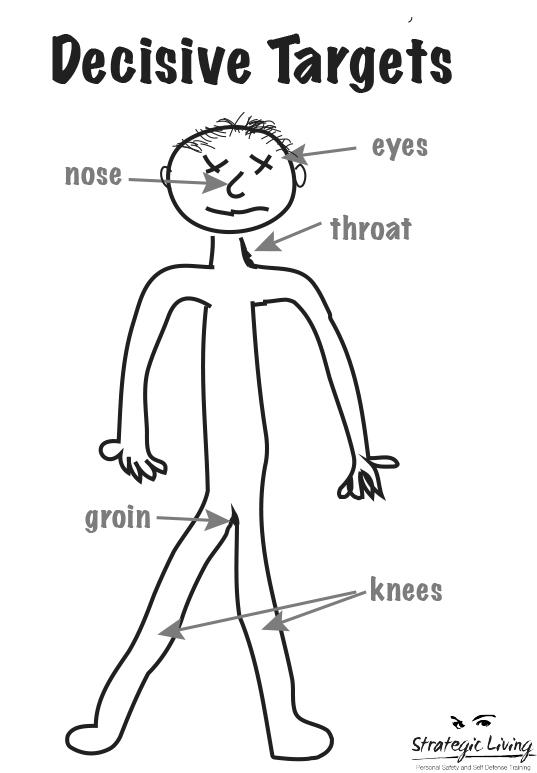Table of Contents
- Effective Striking Techniques for Disabling an Attacker’s Eyes
- Maximizing Impact Through Precise Targeting of the Nose
- Strategic Strikes to the Mouth for Immediate Self-Defense
- Integrating Eye Nose and Mouth Targeting into Comprehensive Safety Practices
- Insights and Conclusions
Effective Striking Techniques for Disabling an Attacker’s Eyes
Targeting an attacker’s eyes requires precision and confidence. Effective techniques include swift punches delivered with the fingertips or a sharp jab using the thumbs, both aimed at the area surrounding the eyes to cause temporary blindness or intense discomfort. Remember, striking directly on the eyeball demands extreme care and swift action to maximize impact without losing balance. The key is to keep your movements unpredictable-use varied angles and timing to catch the attacker off guard. For example, a quick upward jab from below the attacker’s line of sight can be more effective than a direct front punch, exploiting natural reflex vulnerabilities.
To enhance your ability to disable an opponent’s vision quickly, integrate these key techniques into your self-defense routine:
- Raking the eyes with your fingernails or fingertips can create intense irritation.
- Thrusting thumb attacks aimed at the inner corner of the eye socket deliver focused pressure.
- Sliding palm strikes upward across the eyebrows disrupt the attacker’s line of sight and balance.
- Quick jabs combined with distracting movements to the nose or chin can help create an opening.
Maximizing Impact Through Precise Targeting of the Nose
Striking the nose with accuracy can incapacitate an attacker swiftly, creating an opportunity to escape or gain control of the situation. The nose is one of the most sensitive areas on the face due to its concentration of nerve endings and cartilage. Delivering a firm, targeted strike-such as a palm heel strike or an upward jab-can cause intense pain, disorientation, and impaired breathing. This precision not only maximizes the immediate physical impact but also triggers a natural reflex to pull back, leaving the aggressor vulnerable.
To optimize the effectiveness of targeting the nose, incorporate the following techniques into your self-defense practice:
- Maintain proper distance: Close enough to strike accurately without losing balance or exposing yourself.
- Focus on striking upward: This takes advantage of the structure of the nose and the element of surprise.
- Follow through: Ensure the force is delivered quickly and decisively, minimizing the attacker’s ability to recover.
- Keep your hands up: While aiming for the nose, protect your face from counterattacks.
Mastering these elements can turn a simple nose strike into a powerful defensive maneuver, increasing your chances of safely evading danger.
Strategic Strikes to the Mouth for Immediate Self-Defense
When it comes to neutralizing an immediate threat, targeting the mouth can be a decisive move. This vulnerable area is sensitive to force, and a well-placed strike can disrupt an attacker’s breathing and ability to communicate, buying you critical seconds to escape. Employ techniques such as swift palm strikes, upward elbow jabs, or precise punches aimed at the lips or jawline to maximize impact. Remember, effectiveness lies in the element of surprise and quick execution rather than brute strength.
Utilizing strategic mouth strikes as part of your self-defense repertoire offers several tactical advantages:
- Impaired breathing: Disrupts airflow, causing the attacker to falter or momentarily lose control.
- Disorientation: Inflicts pain that distracts the opponent, reducing their ability to continue an assault.
- Easy access: Unlike protected areas, the mouth is often exposed and available for quick targeting.
Mastering these striking points enhances your defensive strategy with minimal risk, empowering you to respond with confidence and precision under pressure.
Integrating Eye Nose and Mouth Targeting into Comprehensive Safety Practices
Incorporating precise targeting of the eyes, nose, and mouth into your broader safety strategy enhances your ability to quickly incapacitate an attacker. These vulnerable facial points serve as critical leverage in close-quarters defense, allowing you to create opportunities for escape or to gain control. Strategically combining strikes to these areas with positioning, awareness, and de-escalation techniques forms a layered defense system that significantly improves your overall security posture.
Effective integration means training consistently to refine your aim, timing, and intensity while maintaining situational awareness. Remember to embrace these best practices:
- Practice targeting with controlled force to avoid unnecessary injury while ensuring effectiveness.
- Incorporate drills that simulate realistic scenarios to build muscle memory and response speed.
- Complement physical techniques with mental preparedness and quick decision-making skills.
Insights and Conclusions
In conclusion, understanding and utilizing effective self-defense techniques focused on vulnerable areas such as the eyes, nose, and mouth can significantly enhance personal safety in critical situations. While no method guarantees complete protection, targeting these key points can provide individuals with a strategic advantage to escape and seek help. It remains essential to combine such practical knowledge with awareness, prevention, and, when possible, formal training to ensure the best outcomes in potential self-defense scenarios.Check Our Other Blogs
- StunGun – Your Trusted Source for Stun Guns, Laws, and Self-Defense Tips
- PepperSprayLaws – Your Trusted Resource for Pepper Spray Information
- StunGunLaws – Your Trusted Guide to Stun Gun Legality and Safety




